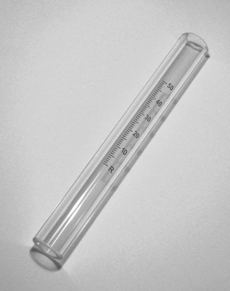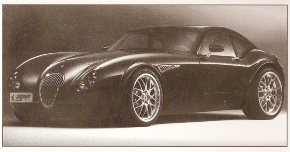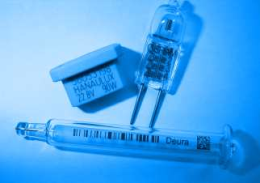|
 
CerMark Laser Marking on Glass / Ceramic
 Black marks on challenging substrates Black marks on challenging substrates
TherMark offers several products specially engineered for optimal laser marking of glass and ceramics. These products are scientifically formulated to create a permanent chemical bond to glass or ceramic surfaces.
Marking glass and ceramic with traditional methods is a significant challenge. Current marking methods tend to produce low-contrast gray or white marks. Chemical etching processes can be time consuming and involve using highly toxic materials. Direct marks with a CO2 laser are made by creating ‘micro-fractures” which frost the glass but can compromise the strength of the substrate.
TherMark’s patented laser marking materials create extremely high quality marks while protecting the glass or ceramic surface from damaging laser energy. The contrast, resolution, and durability of these marks make TherMark materials ideal for these common applications:
 |
Awards & Engraving
- Glass trophies and awards
- Designs on plates and dinnerware
- Personalization of mugs and cups
- Designs on ceramic tile
|
|
Industrial
- VIN #s on automotive glass
- Coding and traceability on laboratory slides
- Specialty electronic components and substrates
- Serialization and brand marks on sanitary ware
- Logos and instructions on industrial glass
- ID on glass ampoules and vials
|
 |
Compatible substrates
The process window for creating high quality marks may vary depending on substrate composition and/or thickness, application method, and laser type.
Product recommendations
| LMC6044P |
Comes as a liquid product which can either be foam brushed or sprayed through an airbrush. Airbrush is preferable as it generates a homogeneous coating over the substrate. Ideal for generating high contrast dark black marks on a variety of glass or ceramic substrates. Works great especially with solid state laser sources.
|
| LMC12 |
Since the release of LMC6044P, LMC12 is no longer the preferred product for marking glass and ceramics. If you are a current LMC12 user we recommend upgrading to LMC6044P. If you do not wish to make the switch, however, liquid LMC12 is still available, although the aerosol LMC12 has been discontinued.
|
| LMC260 |
Is a non-adhesive tape preferable in high volume applications where the process of application should be automated and there is low tolerance for application error and consistency in application from mark to mark. It will require the use of a reel to reel system and/or custom process integration.
|
Laser recommendations:
Although CO2 and solid state lasers both work for marking glass and ceramic, if you are concerned about micro-fractures, it is prudent to avoid using a CO2 laser. For marking glass & ceramic, we recommend a minimum of 15W of power for CO2 lasers, and 5W of power for solid state lasers.
Feel free to consult our Choosing a Laser section for more information on choosing a laser.
Marking Time:
Exact marking times will vary depending on your choice of TherMark material, substrate composition, substrate thickness, and laser power. For more information on cycle time, click here.
|